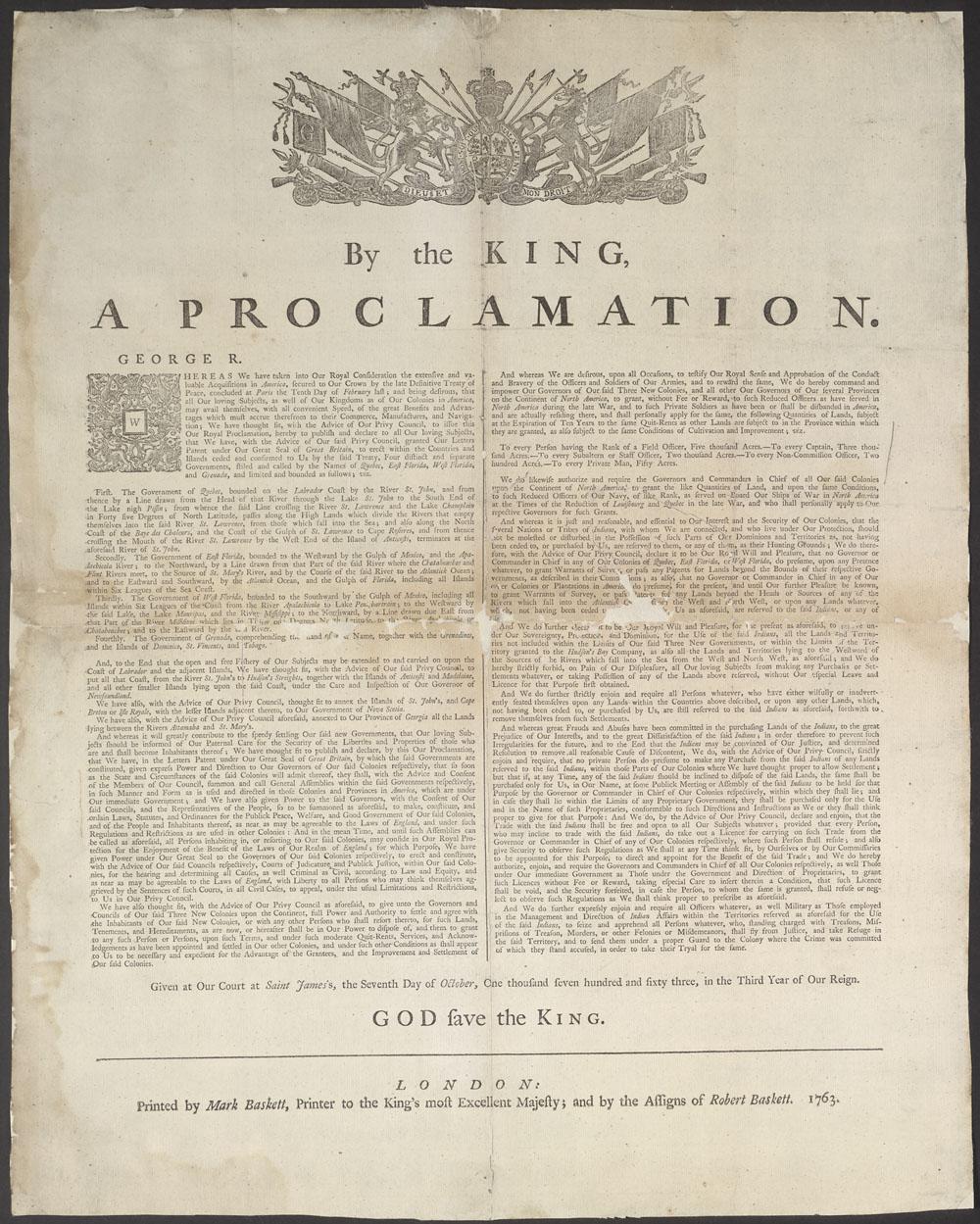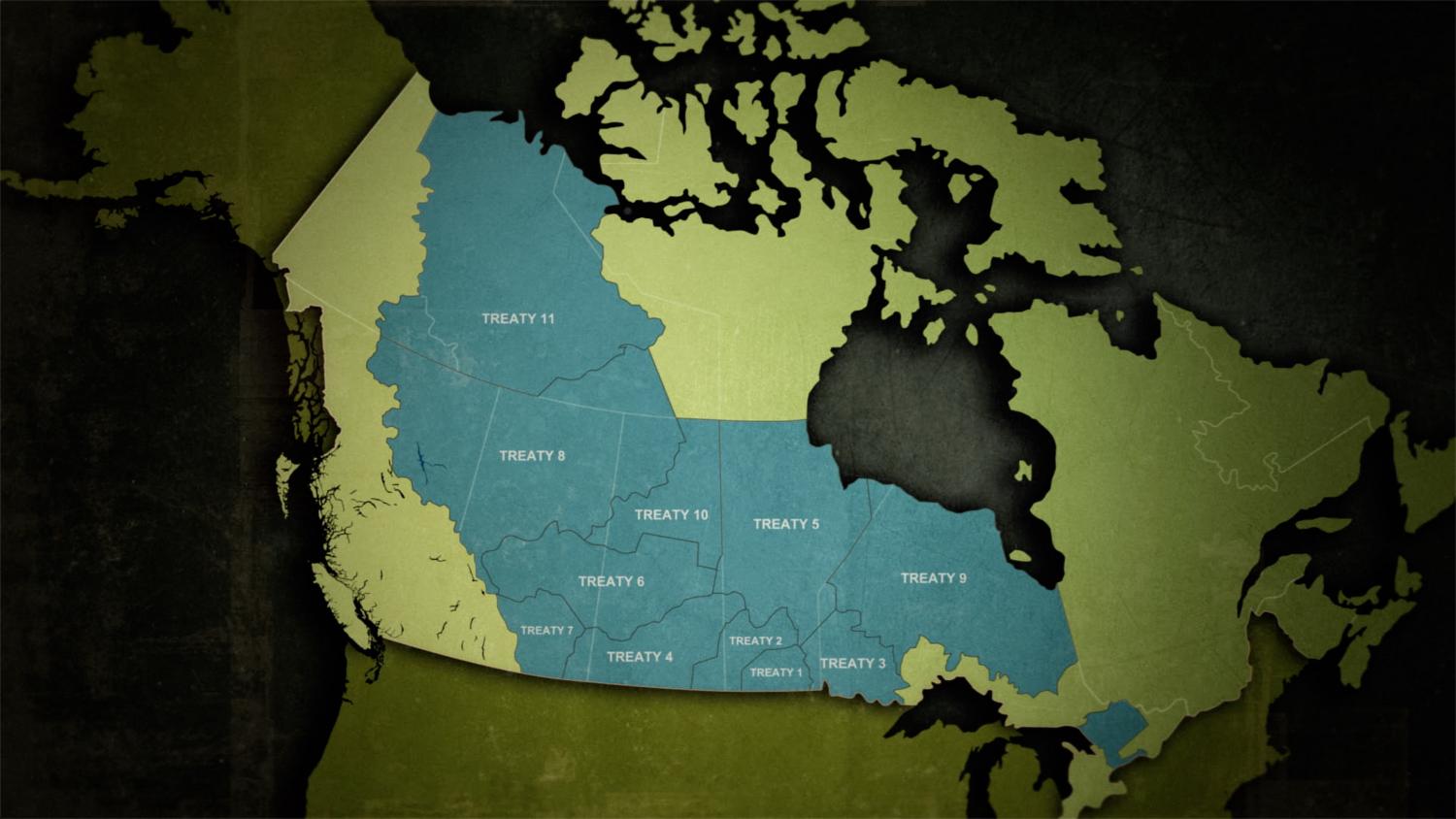The Royal Proclamation of 1763
A monumental British decree recognizes Aboriginal title and the need to formally extinguish it
Date: 1763
On Feb. 19, 1763, an era was coming to an end. France, which had maintained colonies scattered throughout North America for 200 years, was now on the losing end of the Seven Years’ War, waged against Britain and its allies. In the Treaty of Paris, France ceded all of its land east of the Mississippi River to Great Britain, including Québec.
But a large transfer of land can invite chaos. In an attempt to instill order, King George III issued the Royal Proclamation, a document claiming the territory as British, while providing organization and government to the new territories. Several of its provisions were concerned with the fact that the newly-British land was already occupied — and not by the French.
In its provisions, the Royal Proclamation recognized Aboriginal peoples’ inherent title to the land. This meant that British colonies could only expand with the consent of their Indigenous neighbours. But colonists couldn’t make arrangements to start a new settlement on their own. They instead had to rely on the Crown as the middleman. Once a treaty with the respective Indigenous community was signed, and new land acquired, the government could then sell the land to interested colonists.
The Royal Proclamation, and its clear protocols for land acquisition, has remained politically relevant since its creation. It influenced important Canadian legal documents that came later, like the British North America Act of 1867 and 1982's Constitution Act in 1982, which confirmed the Indigenous rights listed in the proclamation and guaranteed their future protection.
This all makes British Columbia — as well as northeastern Canada, part of the Yukon, and land in Nunavut and the Northwest Territories — a bit of an anomaly. With some exceptions on Vancouver Island, the northeastern corner of the mainland and, more recently, in the Nass Valley near the Alaskan Panhandle, most of the province sits on land that was never formally given up through a treaty. B.C. has argued that the Royal Proclamation was signed prior to the province's settlement and therefore is not relevant. However, this view is not universally shared — even amongst government officials themselves. Indigenous land rights advocates, for their part, maintain that B.C. is stolen land and cite the proclamation as proof.
In addition to its uneven application, some critics say the document has other shortcomings and inconsistencies. For instance, even the codifying of treaties, which acknowledge Indigenous title and seek Indigenous consent, was traditionally a unilateral act made solely by the British government — without the input or consent of any First Nations.
But for all its imperfections, the Royal Proclamation still serves as an enduring foundation for the legal recognition of Indigenous sovereignty and autonomy. The “Indian Magna Carta,” as it is sometimes known, has yet to be overruled by another law and remains valid to this day.
Sources:
1. 250th Anniversary of the Royal Proclamation of 1763. Government of Canada; Indigenous and Northern Affairs Canada, 8 Mar. 2016, www.rcaanc-cirnac.gc.ca/eng/1370355181092/1607905122267.
2. Hall, Anthony J. Royal Proclamation of 1763. The Canadian Encyclopedia, 7 Feb. 2006, www.thecanadianencyclopedia.ca/en/article/royal-proclamation-of-1763.
3. Hutchings, Patricia Margaret. The Argument for the Application of the Royal Proclamation of 1763 to British Columbia, Its Force and Effect. University of British Columbia, 1 Jan. 1987, open.library.ubc.ca/cIRcle/collections/ubctheses/831/items/1.0077695.
4. MacKinnon, Leslie. Canada's 'Indian Magna Carta,' Turns 250. CBC News, 6 Oct. 2013, www.cbc.ca/news/politics/royal-proclamation-of-1763-canada-s-indian-magna-carta-turns-250-1.1927667.
5. Royal Proclamation, 1763. First Nations and Indigenous Studies at the University of British Columbia, indigenousfoundations.arts.ubc.ca/royal_proclamation_1763/.





